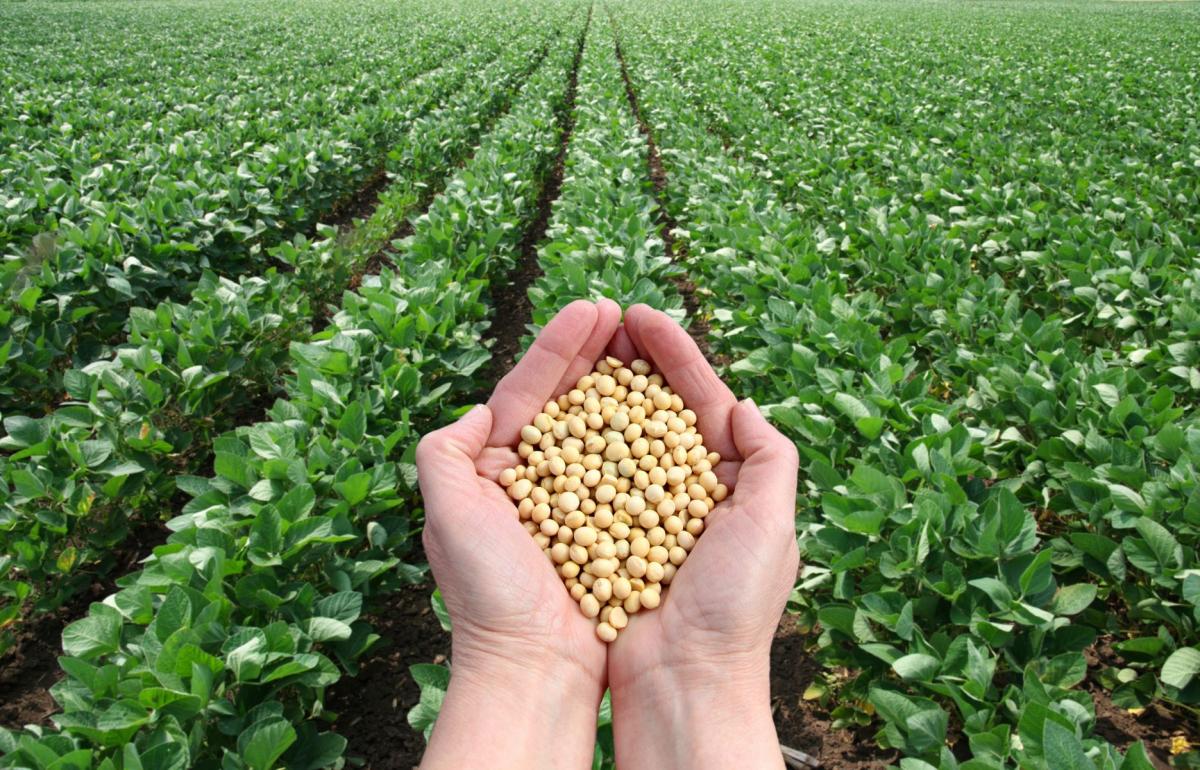Insects: Aphids and Other Common Soybean Insects
Insects play a critical role in the all cropping systems. As with all cropping systems, there are beneficial and harmful insects that can be found. Identification is critical to assure that correct management recommendations are provided. Common insect pest of soybeans include soybean aphids, bean leaf beetles, two-spotted spider mite, Japanese beetle, stink bugs and dectes stem borer.
Soybean Aphid
The soybean aphid (Aphis glycines) is a soft-bodied insect, light green to pale yellow, less than 1/16th inch long. It also has two black‐tipped cornicles (cornicles look like tailpipes) on the rear of the abdomen (Figure 1). This insect has a piercing‐sucking mouthparts and is typically found feeding on new tissue on the underside of soybean leaves. With severe infections later in the growing season, aphids can be found feeding on all plant parts. The soybean aphid is the only aphid currently known to colonize on soybean in the North America.
The soybean aphid life cycle is complex with up to 18 generations a year. For the life cycle to be completed, it requires two plant host species — common buckthorn (Rhamnus cathartica) and soybean. Common buckthorn serves as an overwintering host plant for the aphid. Adults lay eggs on the buckthorn in the fall and these eggs overwinter and hatch the following spring to wingless females. These females start reproducing without mating, giving rise to more female aphids. Once two to three generations are produced on buckthorn, winged females are produced that migrate to soybean.
Once on soybeans, multiple generations of wingless female aphids are produced until late summer and early fall. When daytime high temperatures are between 70‐85°F, aphid populations can increase dramatically (populations can double in two to three days). When daytime high temperatures are between 90°F and 95°F, reproduction decreases, and when daytime high temperatures are above 95°F, death occurs. If high populations are reached during the summer, winged females are again produced that migrate to other soybean fields.
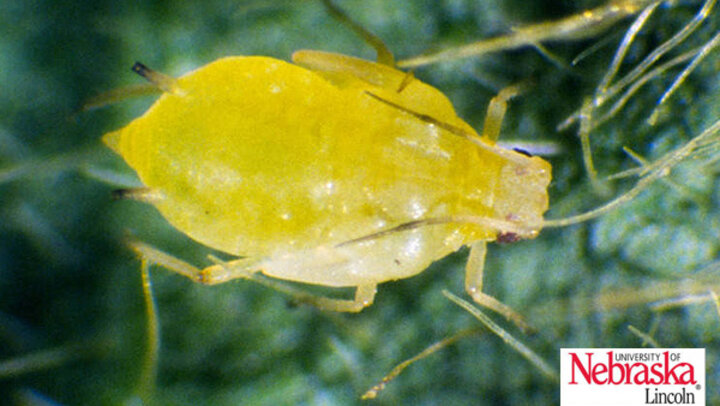
Genetic Resistance
Certain soybean varieties have genetic qualities that prevent them from being heavily damaged by the soybean aphid. There are also some varieties that reduce soybean aphid reproduction and creates an overall unhealthy aphid.
Scouting
Soybean fields should be checked or scouted for soybean aphids every five to seven days. It is critical to starting routinely scouting fields no later than late June. Regular scouting allows you to determine if aphid populations are actively increasing and monitor the natural enemies populations, which include Asian lady beetle (Orius insidiosus) (Figure 2), green lacewing (Chyrsoperla spp.) (Figure 3), brown lacewing (Hemerobius spp.) (Figure 4) and damsel bugs or Nabids (Nabis spp.) (Figure 5).
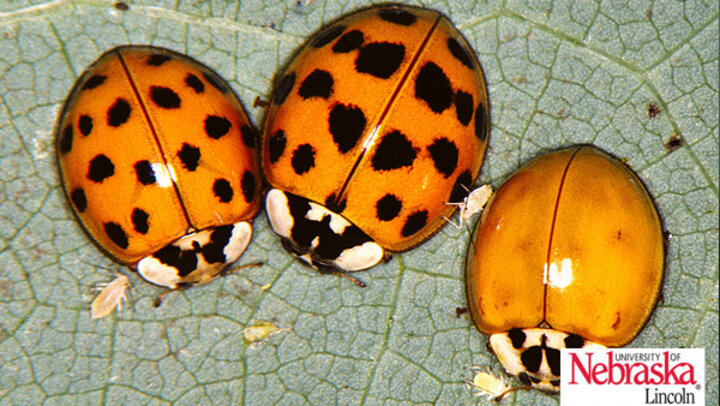
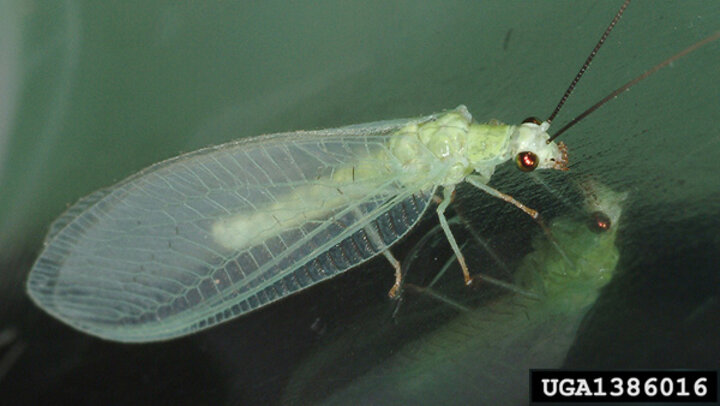
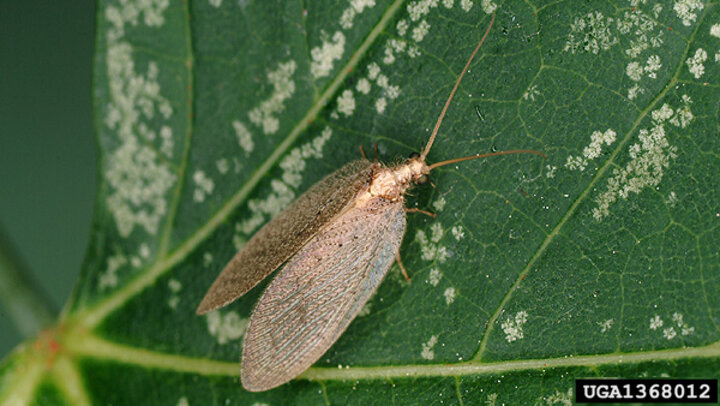

Soybean Aphid Management
The economic threshold — or population infestation level where control measures are recommended — for late vegetative through R5 stage soybeans is 250 aphids per plant with 80% of the plants infested and populations increasing. There are two methods to scout and determine if an insecticide treatment is needed.
"Economic Threshold"
An economic threshold is the insect's population level or extent of crop damage at which the value of the crop destroyed exceeds the cost of controlling the pest.
Conventional Method
Conventional Method — Check 20 to 30 randomly selected plants for the presence of aphids in four to five areas in the field. Particular attention should be placed on checking areas of fields adjacent to tree lines where wind-blown aphids are more likely to settle. When checking the plants, concentrate on checking the upper portion where aphids typically first colonize. Record the total number of aphids per plant checked and determine an average number for each area checked.
Conventional Method
Interested in finding out more about the Conventional Method?
Watch this video!
Go to videoSpeed Scouting Method
Speed Scouting Method — This method uses a spreadsheet that has been adapted from a sampling plan developed by the University of Minnesota. Plants are considered “infested” when there are 40 or more aphids on a plant. The scout does not have to count or estimate the number of aphids on a plant to determine where it has reached threshold of 250 aphids per plant. The spreadsheet then recommends further scouting or treatment options based on the number of “infested” plans in a given area.
Speed Scouting Method
Interested in finding out more about the Speed Scouting Method?
Watch this video to learn more!
Go to videoInsecticide
When an aphid population has exceeded the economic threshold, an insecticide application may be applied.

Nebraska Soybean Board graciously provided the funding for the Soybean Management Guide.
Course authored by:
Amy Timmerman, extension educator; Aaron Nygren, extension educator; Brandy VanDeWalle, extension educator; Loren Giesler, Plant Pathologist Department head; Ron Seymour, extension educator; Keith Glewen, former extension educator; Charles Shapiro, emeritus extension soil scientist; Amit Jhala, extension weed specialist; Don Treptow, former graduate student
